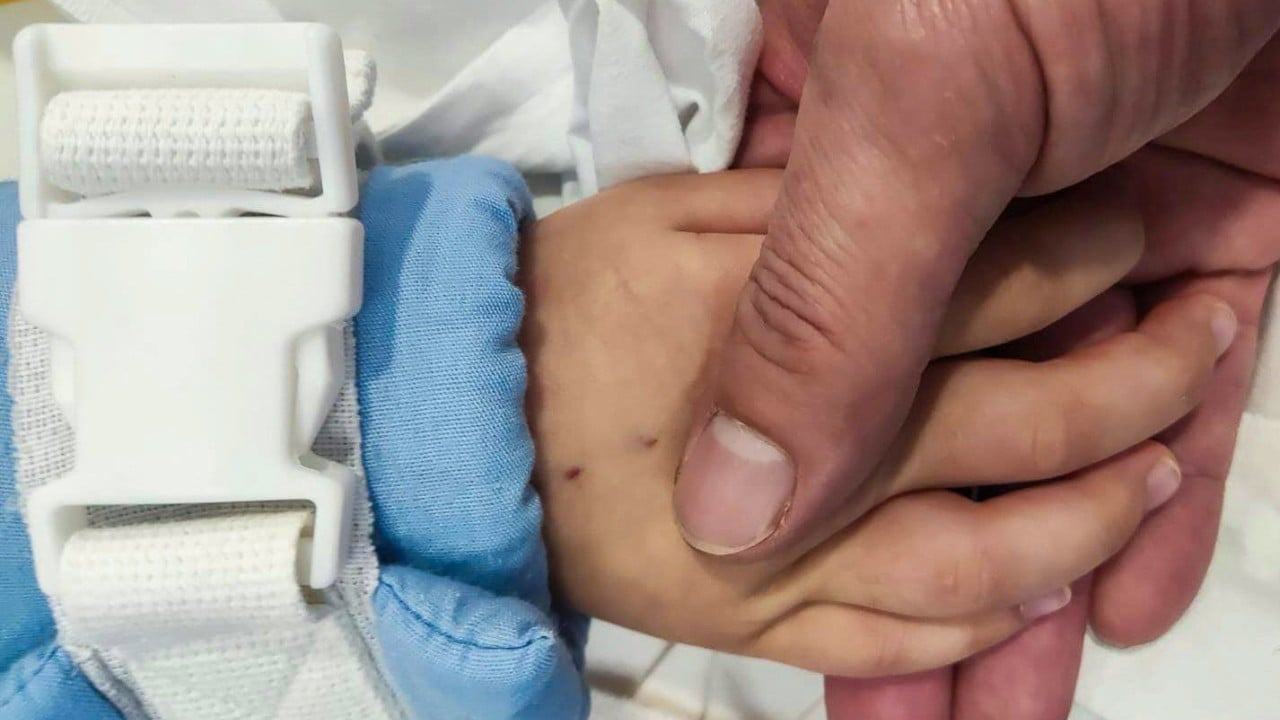A young girl who suffered cardiac arrest and was left with brain dysfunction after she got stitches for a head wound at a public hospital in Hong Kong had no genetic diseases or specific medical conditions, according to authorities.
But Hospital Authority chief executive Tony Ko Pat-sing refused to say on Monday whether human error played any role in leaving Lai Sum-yuet, who recently turned five, in critical condition after the treatment.
Ko pledged, however, to boost guidelines involving the care of children.
“I sincerely apologise to the family. During the meeting, we assured them that the hospital, particularly the medical team, will continue to make every effort to take care of Sum-yuet.
“We also promised to provide the necessary assistance and support to their family members.”
Sum-yuet is in the paediatric intensive care unit at Princess Margaret Hospital in Kwai Chung with hypoxic ischemic encephalopathy – a dysfunction of the brain caused by a lack of oxygen and reduced blood flow.
Ko offered the fresh apology to the family after he updated them on the latest information about Sum-yuet, including the results of a test that found no abnormalities in her genetic make-up.
“The results of the genetic test came back negative, indicating that we temporarily have not identified any specific medical conditions or circumstances in the clinical examinations that could explain the unfortunate incident involving Sum-yuet,” he said.
The child was taken to Yan Chai Hospital in Tsuen Wan on May 25 with a 2cm cut on the back of her head suffered in a fall at home. She also had a slight fever.
The hospital earlier said the girl was “struggling and crying” after the first stitch was made at 11.28pm. A patient care assistant later “stabilised [the girl’s] head” with her hands.
But the medical assistant and nurse discovered the girl had lost consciousness after the three-minute procedure and her heart had stopped.
They performed first aid on her and her heart started to beat again at 11.49pm.
Her father earlier accused medical staff of forcefully pressing his daughter’s head against a pillow during the procedure, which he said made it difficult for her to breathe.
Police launched an inquiry last month after receiving a report from Sum-yuet’s father, and Ko said the continuing investigation meant he could not comment on whether human error was involved.

Emergency medicine and paediatrics experts asked to review existing guidelines had suggested making sure special attention was paid to communicating with children and parents to ensure they understood the treatment process, he added.
Ko said the experts also recommended better monitoring of clinical indicators in paediatric patients to prevent unexpected situations developing and to consider sedation if necessary.
“It serves as a reminder to colleagues on how to handle paediatric patients and highlights important aspects that require special attention,” he added.
Ko did not discuss whether the two medical staff members involved, who are at present working in non-clinical areas, had administered anaesthesia to Sum-yuet or were involved in any wrongdoing.
“Police are currently conducting an investigation and it would be inappropriate to comment at this time,” Ko said. “But the hospital bears a responsibility when something unfortunate happens to a child. It is crucial for us to apologise to the family.”
Joephy Chan Wing-yan, a lawmaker who has been helping the family, accused the hospital of suggesting the incident might be related to an undisclosed illness or genetic condition, which she said had caused “secondary harm” to the family.
She quoted the father as saying apologies were no help but it was better than denying the situation.
Chan added the father had also urged Ko to personally oversee the investigation into the incident and confirm whether any medical staff committed errors.


